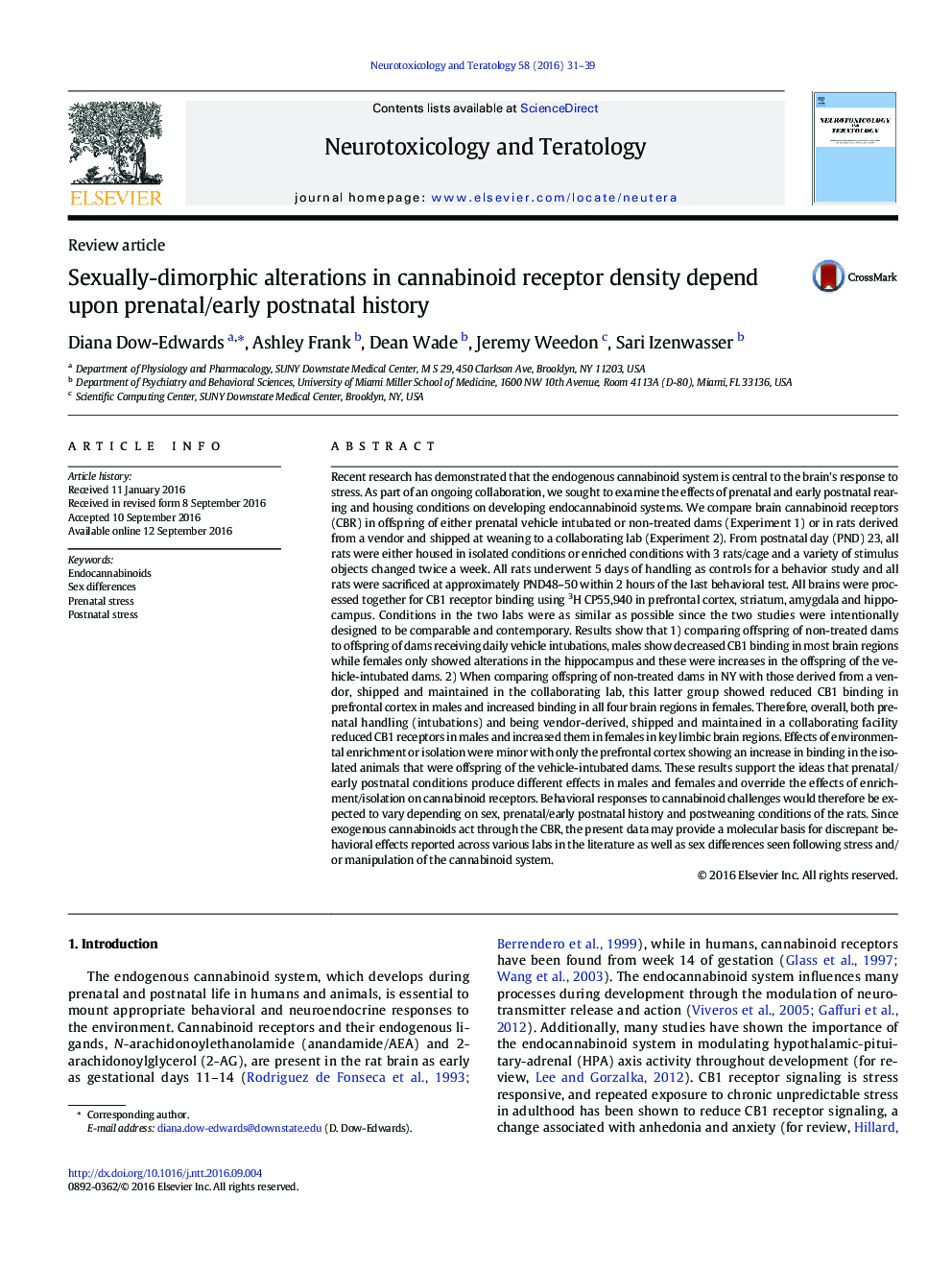| Article ID | Journal | Published Year | Pages | File Type |
|---|---|---|---|---|
| 5561053 | Neurotoxicology and Teratology | 2016 | 9 Pages |
â¢Adolescent rat brains were processed for cannabinoid receptors (CB1R) following prenatal or periweaning stressorsâ¢Prenatal stress (daily maternal intubations) globally reduced CB1R in males and increased CB1R in females in hippocampusâ¢Being vendor-derived, shipped and raised in a collaborator's lab reduced CB1R in prefrontal cortex of males and globally increased CB1R in femalesâ¢Since early stress decreased CB1 binding in males and increased it in females, stress can alter responsivity of the endocannabinoid system in sex-specific ways.
Recent research has demonstrated that the endogenous cannabinoid system is central to the brain's response to stress. As part of an ongoing collaboration, we sought to examine the effects of prenatal and early postnatal rearing and housing conditions on developing endocannabinoid systems. We compare brain cannabinoid receptors (CBR) in offspring of either prenatal vehicle intubated or non-treated dams (Experiment 1) or in rats derived from a vendor and shipped at weaning to a collaborating lab (Experiment 2). From postnatal day (PND) 23, all rats were either housed in isolated conditions or enriched conditions with 3 rats/cage and a variety of stimulus objects changed twice a week. All rats underwent 5Â days of handling as controls for a behavior study and all rats were sacrificed at approximately PND48-50 within 2Â hours of the last behavioral test. All brains were processed together for CB1 receptor binding using 3H CP55,940 in prefrontal cortex, striatum, amygdala and hippocampus. Conditions in the two labs were as similar as possible since the two studies were intentionally designed to be comparable and contemporary. Results show that 1) comparing offspring of non-treated dams to offspring of dams receiving daily vehicle intubations, males show decreased CB1 binding in most brain regions while females only showed alterations in the hippocampus and these were increases in the offspring of the vehicle-intubated dams. 2) When comparing offspring of non-treated dams in NY with those derived from a vendor, shipped and maintained in the collaborating lab, this latter group showed reduced CB1 binding in prefrontal cortex in males and increased binding in all four brain regions in females. Therefore, overall, both prenatal handling (intubations) and being vendor-derived, shipped and maintained in a collaborating facility reduced CB1 receptors in males and increased them in females in key limbic brain regions. Effects of environmental enrichment or isolation were minor with only the prefrontal cortex showing an increase in binding in the isolated animals that were offspring of the vehicle-intubated dams. These results support the ideas that prenatal/early postnatal conditions produce different effects in males and females and override the effects of enrichment/isolation on cannabinoid receptors. Behavioral responses to cannabinoid challenges would therefore be expected to vary depending on sex, prenatal/early postnatal history and postweaning conditions of the rats. Since exogenous cannabinoids act through the CBR, the present data may provide a molecular basis for discrepant behavioral effects reported across various labs in the literature as well as sex differences seen following stress and/or manipulation of the cannabinoid system.
